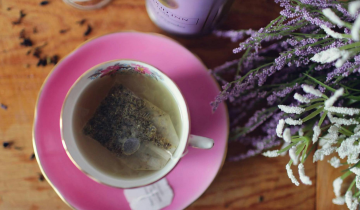Written by Charan Padmanaban Kamali
Edited by CHIQIO
Keywords: perfume history, cultural influence on fragrance, global perfumery, perfume bottle design, cultural diversity in perfumery
Meta Description: Explore the profound influence of culture on perfumes worldwide, from ancient rituals in Egypt to contemporary trends in Paris and beyond. Discover how perfume bottles serve as mediums for cultural expression and artistic innovation in this exploration of scent and culture.
More than a fragrance, perfume represents history, tradition, and cultural values. In many diverse regions and cultures of the globe, different practices and applications of perfume have evolved. From ancient rituals in Egypt to modern tones in Paris fashion, perfumery has grown into a multi-billion-dollar industry. Besides the fragrance itself, perfume bottles have become media for cultural expression and artistic innovation.
History of fragrances
To grasp the influence of culture on custom perfume bottle designs, one must delve into history. Fragrances have been intertwined with human culture for centuries, and civilizations around the world have left behind artifacts showcasing their distinct approaches to perfumery. In ancient Egypt, perfume bottles were crafted as intricate works of art, emphasizing the significance of fragrance in religious rituals and burial practices.
During the Renaissance in Europe, perfume bottles evolved into miniature masterpieces, inspired by the era’s artistic and cultural rebirth. Intricately carved crystal and glass bottles, adorned with gold and precious stones, were not just containers for scent but symbols of luxury and refinement. These vessels transcended mere functionality, serving as tangible representations of social status and the opulence of the privileged class.
Let’s explore the diverse array of scents from around the world.
Source: Medium
The Middle East is famous for its appreciation of rich and opulent fragrances. Oud, or agarwood, is a highly valued ingredient in Middle Eastern perfumery, celebrated for its deep, woody, and resinous scent. Often blended with exotic spices like saffron, cinnamon, and cloves, it creates luxurious and captivating aromas that are highly esteemed in the region.
Source: Cosmetics design Asia
In Asia, especially in countries like Japan and India, floral and herbal fragrances carry deep cultural significance. Cherry blossom, jasmine, and lotus are common floral notes in Asian perfumery, representing beauty, purity, and spirituality. Herbal elements such as green tea, ginger, and sandalwood contribute a refreshing and grounding quality to these fragrances.
Source: Unique Tours Factory
European perfumery is synonymous with classic elegance and timeless sophistication. France, especially, is famous for its haute couture perfumes that feature notes like rose, lavender, bergamot, and vetiver. These fragrances embody refinement and allure, mirroring Europe’s rich cultural heritage and artistic sensibilities.
Diverse Cultures in Contemporary Perfumery
In today’s era, the world of perfumery has evolved into a fusion of diverse cultural influences. Globalization has facilitated the exchange of ideas, traditions, and aesthetics, resulting in a vibrant mosaic of design inspirations. Contemporary perfume bottles often blend Eastern and Western elements, honoring the rich cultural legacies of various societies.
In the East, where fragrance holds deep cultural significance, perfume bottle designs often draw inspiration from traditional art forms such as intricate Chinese porcelain or delicate Japanese ceramics. These bottles feature intricate patterns, delicate brushwork, and vivid colors, reflecting the artistic heritage of their respective regions. Conversely, Western influences may be seen in minimalist designs, sleek contours, and modern materials, embodying a contemporary and cosmopolitan aesthetic.
In summary, perfumery is a reflection of cultural evolution and artistic expression, from ancient rituals to modern trends. Perfume bottles, as both containers and artworks, embody the rich heritage and creativity of global cultures. Today, this art continues to blend Eastern traditions with Western aesthetics, creating a diverse and dynamic perfume industry that celebrates our shared human experience through scent.

 No products in the cart.
No products in the cart.